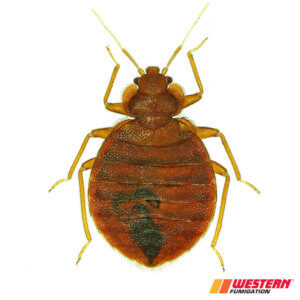As a homeowner, the last thing you want to think about is having pests in your home. You want to think about the next color you’ll paint the living room or how to add another bathroom upstairs (because as all homeowners know, you’re never done). While focusing on the fun stuff is always the preference, you also have to plan for the not-so-fun. That’s why we have homeowner’s insurance, have our boilers serviced, and even clean the lint out of the dryer’s lint trap. Not doing those things can have consequences down the road. So, when you’re thinking about preventative measures to keep your home and those under the roof safe, don’t forget about pest control.
Having routine pest control done on your home is your best bet. It will be able to catch and prevent introductions from becoming large infestations and will bring you peace of mind. But what if you don’t have routine pest control at your home? What could happen, right? You probably have mint extract dipped cotton balls around and planted lavender near the backdoor. You most likely sweep away spider webs and do some awesome DIY pest control. You may think that will cover it, but you may have just put yourself in the position of needing fumigation services instead.
Fumigation is the one option that offers a very high rate of effective control, 99 percent plus when an infestation is already occurring. Fumigants are broad-spectrum which means they can be used for many different pest species. However, there are a few pests where fumigation is the preferred option.
If you’re looking for what pests require fumigation – here are three that can really benefit from it:
- Powderpost Beetles
- Bed Bugs
- Drywood Termites
See below for why fumigation is the common go-to option for these particular pests.
Powderpost Beetles are wood-boring beetles that can do some serious damage to homes and any structure with a wooden frame. They lay their eggs within the pores in the wood. When the eggs hatch, the larvae then burrow into the wood, eating it from the inside out, emerging as adults for the next cycle. Unfortunately, this type of damage is difficult to spot until you see either the holes from where the larvae ate their way out or the frass they leave behind. The damage can be extensive by the time you see either of those. A moisture barrier could be applied to wood since some powderpost beetle species need it to survive, but you won’t be able to keep them out entirely. And once they’re inside the wood, topical treatments are not very effective. Fumigants, though, can seep well into the wood, taking care of the ones that are hiding inside. Additionally, fumigants will eliminate all life stages from eggs to larvae to adults. General pest control is better for small infestations, but we don’t think it should ever be used for embedded powderpost beetle infestations. It just can’t reach where they are. Fumigants can.
Bed bugs are sneaky little things. They can hitchhike into your home on the bottom of your shoe as well as on a backpack or piece of luggage. And contrary to popular belief, it doesn’t matter how clean your home or the hotel you visited happens to be. They don’t feed on filth like cockroaches. For bed bugs, YOU are the meal. So, wherever there are people, that’s where they like to be. Each adult female produces about one to five eggs per day, and typically around 500 eggs over a lifetime. Compared to a common housefly that lays 500 eggs over three to four days, bed bug growth is considered slow. Each bedbug egg takes 7-10 days to hatch and another three to six weeks for the offspring to develop into an adult. And then, the cycle starts all over again. So, while they may be considered slow breeders, that doesn’t mean they still won’t grow into a large infestation at an alarming rate. The main reason they can get out of hand is that they are excellent hiders living a very cryptic lifestyle in the smallest cracks and crevices. They can hide in bed frames, planks of a headboard, behind electrical outlets, under loose wallpaper, between cushions, and, of course, in mattresses. They can even hide in the head of a screw! That’s what makes them so difficult to spot in the first place and what allows them time to breed and multiply unnoticed. It’s also what can make general pest control methods miss them. It doesn’t matter where they are hiding if you fumigate for them. Fumigation gets into all the spaces under the tent. It’s a gas, after all!
They don’t feed on filth like cockroaches. For bed bugs, YOU are the meal. So, wherever there are people, that’s where they like to be. Each adult female produces about one to five eggs per day, and typically around 500 eggs over a lifetime. Compared to a common housefly that lays 500 eggs over three to four days, bed bug growth is considered slow. Each bedbug egg takes 7-10 days to hatch and another three to six weeks for the offspring to develop into an adult. And then, the cycle starts all over again. So, while they may be considered slow breeders, that doesn’t mean they still won’t grow into a large infestation at an alarming rate. The main reason they can get out of hand is that they are excellent hiders living a very cryptic lifestyle in the smallest cracks and crevices. They can hide in bed frames, planks of a headboard, behind electrical outlets, under loose wallpaper, between cushions, and, of course, in mattresses. They can even hide in the head of a screw! That’s what makes them so difficult to spot in the first place and what allows them time to breed and multiply unnoticed. It’s also what can make general pest control methods miss them. It doesn’t matter where they are hiding if you fumigate for them. Fumigation gets into all the spaces under the tent. It’s a gas, after all!
Drywood termites are not like the termites you’re probably used to. The more common Eastern subterranean termites may not be the name that you’d come up with, but it’s probably the species you’re thinking of when you think of termites. These are the ones that we hear about regularly and are the most prominent termite species in the Northeast. They come up through the soil, eat through wood, and then swarm to form another colony. Eastern subterranean termites are often managed using either bait placed around your home or subsoil liquid treatments. Fumigation will not work on Eastern subterranean termites since  they live in the ground and the gas will not be able to get down to them. Drywood termites are different. They get their name because they don’t have to have a connection to the soil to maintain the moisture and humidity they need to live. Rather, they can thrive in relatively dry environments such as in lumber or an imported piece of wood furniture. It doesn’t really matter where they are prominent since they can easily travel in and across the country (and the world) inside lumber that is being shipped that hasn’t been treated. By the time you know you have them, the damage to wooden structures can already be very extensive. And general pest control cannot treat this species easily. Fumigation gases will since they will get into the tunnels within the wood where they exist (similar to powder post beetles). It’s the only way to deal with them. So, make sure you’re bringing in a company with a Board Certified Entomologist so they can correctly identify the termite you need to treat for. Using general pest control for drywood termites can give you a false sense of security, which can allow them to flourish and feed. Termites in general cause more than $5 billion in property damage in the United States every year. Using the wrong treatment can cost you – literally.
they live in the ground and the gas will not be able to get down to them. Drywood termites are different. They get their name because they don’t have to have a connection to the soil to maintain the moisture and humidity they need to live. Rather, they can thrive in relatively dry environments such as in lumber or an imported piece of wood furniture. It doesn’t really matter where they are prominent since they can easily travel in and across the country (and the world) inside lumber that is being shipped that hasn’t been treated. By the time you know you have them, the damage to wooden structures can already be very extensive. And general pest control cannot treat this species easily. Fumigation gases will since they will get into the tunnels within the wood where they exist (similar to powder post beetles). It’s the only way to deal with them. So, make sure you’re bringing in a company with a Board Certified Entomologist so they can correctly identify the termite you need to treat for. Using general pest control for drywood termites can give you a false sense of security, which can allow them to flourish and feed. Termites in general cause more than $5 billion in property damage in the United States every year. Using the wrong treatment can cost you – literally.
Fumigation may not be your first course of action in many pest infestations; however, these three pests above often require fumigation treatments. Routine pest control should always be the first line of defense for most pests, but fumigants can be used in hard-to-control problems or major infestations that have gotten out of control. If you’ve been lax in your pest control efforts or if you’ve unknowingly brought in the wrong company, fumigation can let you hit the restart button and get you back down to zero quickly. Taking you down to a clean slate is what fumigation will do, whether it’s the three pests we mentioned or any other. Just make sure you bring in a professional fumigation company with the experience and expertise to do it correctly. It’s a highly regulated industry for a reason.